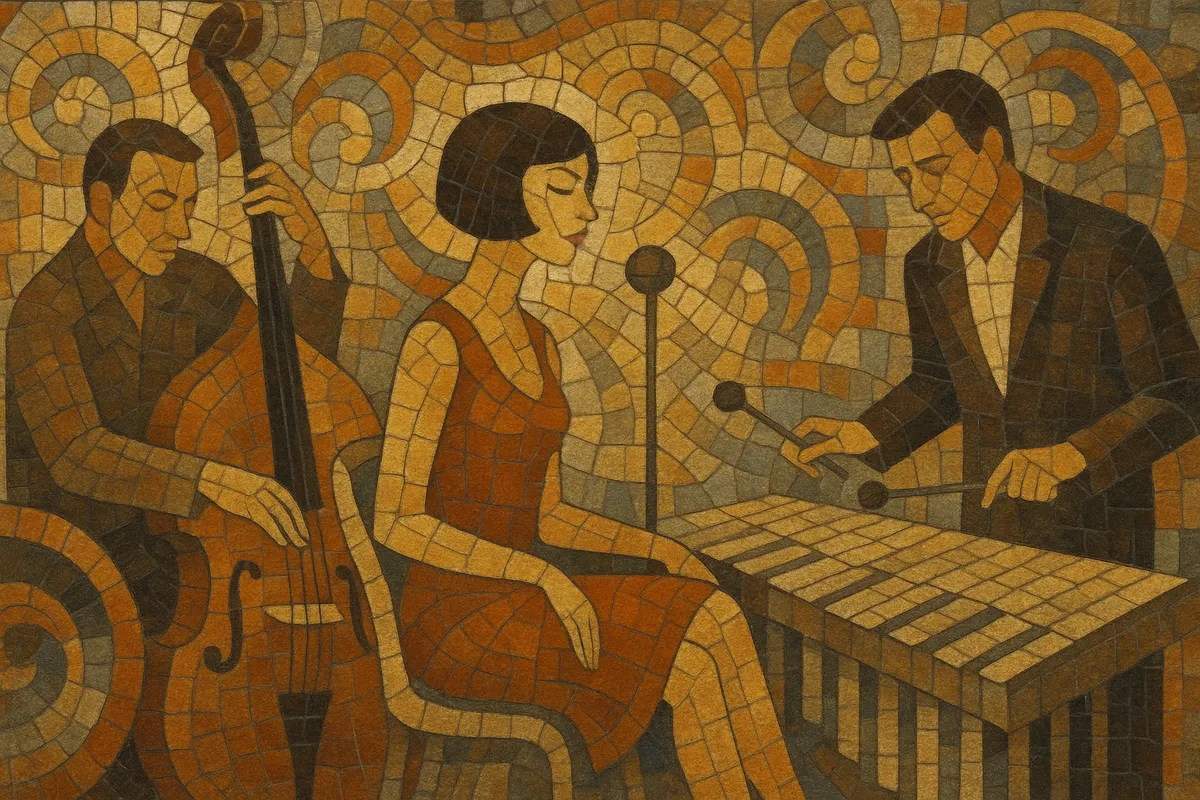Lounge is a mid-20th-century style of easy listening that blends jazz harmony, light orchestral arranging, and Latin/exotica rhythms into suave, unobtrusive music designed for relaxation and sophisticated ambience.
Typically associated with cocktail lounges, tiki bars, and the hi‑fi/stereo boom, it emphasizes lush strings, vibraphone and marimba timbres, brushed drums, gentle horns, and occasional wordless vocals or whistling. Melodies are memorable yet restrained, arrangements are polished, and production often highlights spacious reverbs and playful stereo effects.
A 1990s revival reframed lounge as retro‑chic, intersecting with downtempo, chillout, and nu‑jazz while preserving its trademark mood: warm, cosmopolitan, and stylishly relaxed.
Lounge emerged in the United States during the 1950s, riding the hi‑fi craze and the post‑war appetite for cosmopolitan sounds. Record producers and arrangers drew from jazz, light classical, and Latin idioms while the tiki/exotica trend popularized tropical imagery and percussion. Pioneers such as Les Baxter, Martin Denny, and Esquivel crafted albums that showcased stereo imaging, unusual instruments (theremin, ondioline), and evocative sound effects.
In the 1960s, lounge aesthetics mingled with bossa nova, mambo, and suave orchestral pop. Henry Mancini’s film themes, Herb Alpert’s brass‑driven charm, and the mellow sophistication of Antonio Carlos Jobim helped define a sleek, urbane sound for cocktail parties, airport lounges, and bachelor‑pad culture. The genre favored clean studio sheen, memorable melodies, and understated rhythms suitable for background listening.
Rock, disco, and singer‑songwriter styles eclipsed lounge commercially, and many records slipped into thrift‑store obscurity. Yet audiophiles and crate‑diggers kept the flame alive, appreciating the arrangements, engineering, and period character of mid‑century studio craft.
The 1990s lounge revival—fueled by reissue series like Ultra‑Lounge—recast the style as retro‑cool. Acts such as Combustible Edison, Pizzicato Five (via shibuya‑kei), and Thievery Corporation absorbed lounge’s textures into contemporary downtempo and nu‑jazz. Boutique hotels, bars, and film/TV syncs restored lounge to cultural visibility, now entwined with chillout and café culture.
Modern "nu‑lounge" often blends vintage timbres (vibes, strings, bongos) with soft electronic beats, lo‑noise production, and global influences. The essence remains: a refined, atmospheric soundtrack for relaxed, stylish environments.
Use a palette that evokes warmth and polish: vibraphone or marimba, brushed drum kit, upright or electric bass, nylon‑string or clean electric guitar, piano or Hammond/early electric piano, light brass/woodwinds, and a small string section. Add Latin/tiki colors—bongos, congas, shaker, claves—and occasional color instruments (theremin, ondioline, whistling, wordless vocals) for exotic flair.
Favor jazz‑tinged harmonies: extended chords (maj7, 9ths, 13ths), secondary dominants, and gentle modulations. Keep melodies lyrical and singable, using stepwise motion and tasteful ornamentation. Countermelodies in flutes or muted trumpet add sophistication without crowding the mix.
Aim for medium‑slow to moderate tempos (70–120 BPM). Draw on bossa nova and samba patterns (subtle syncopation, gentle cross‑stick), cha‑cha/mambo accents for variety, or a soft swing feel. The groove should feel buoyant yet unobtrusive—music that invites conversation rather than dominates it.
Use concise forms (AABA, 32‑bar standards, or verse–chorus) with clear introductions, short interludes, and tasteful solos (vibes, flute, muted horn). Orchestrate in layers: start sparse, then introduce strings or woodwinds to bloom the texture, keeping dynamics smooth and balanced.
Emphasize clarity and space: warm mic choices, plate/spring reverbs, gentle tape saturation, and wide but controlled stereo imaging. For retro character, incorporate subtle environmental sounds (ice clinks, soft crowd murmur) or exotic effects sparingly. In modern lounge, underpin acoustic textures with light downtempo beats, upright bass samples, or soft synth pads without losing the organic feel.
Keep the mood intimate and refined. Avoid heavy distortion or aggressive transients. Prioritize tasteful restraint—every note and texture should serve atmosphere and elegance.


